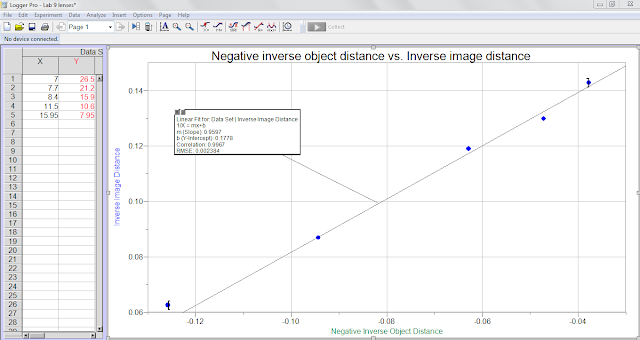PURPOSE: The purpose of the experiment was to see the images with the use of both a convex and a concave mirror. Using these mirrors the magnification and the how the image is displayed was observed to verify the effects of both a convex and concave mirror.
PROCEDURE:
 |
| Convex Mirror |
 |
| Concave Mirror |
 |
| Observing the effects on an image for both the concave and convex mirrors |
 |
Verifying if the image is being inverted or staying erect.
Concave-inverted
Convex-erect |
 |
| Observation of the magnification in a Concave mirror |
 |
| Observation of the magnification in a Convex Mirror |
DATA and ANALYSIS:
 |
| Convex Mirror |
 |
Concave Mirror
|
 |
| Ray Diagram Concave Mirror |
 |
Ray Diagram Convex Mirror
|
CONCLUSION:
In the experimental observation, the convex mirror displayed images that were smaller than the original object and showed the image upright. As the object moved farther away the image became even smaller and larger when closer to the mirror. The image is considered a virtual image however since the rays as shown in the diagrams, did not pass through the image. Therefore convex mirrors displays a virtual image that is upright and is magnified smaller.
The observations for the concave mirror were somewhat different. Referring to the diagram of the concave mirror, as the object distance is larger, the image becomes inverted. When the object distance is just the same as the radius of curvature, C, both the object distance and image distance are the same. The image would not show if the distance was the same as the focal length. If the object was less than the focal length the image would be considered virtual and erect since the rays did not pass through the image.
The magnification verifies the experiment by the showing of signs proving if the image was inverted or virtual. Based on the data, the observations and the magnification calculations both agree within terms and explains the phenomena between concave and convex mirrors.

















